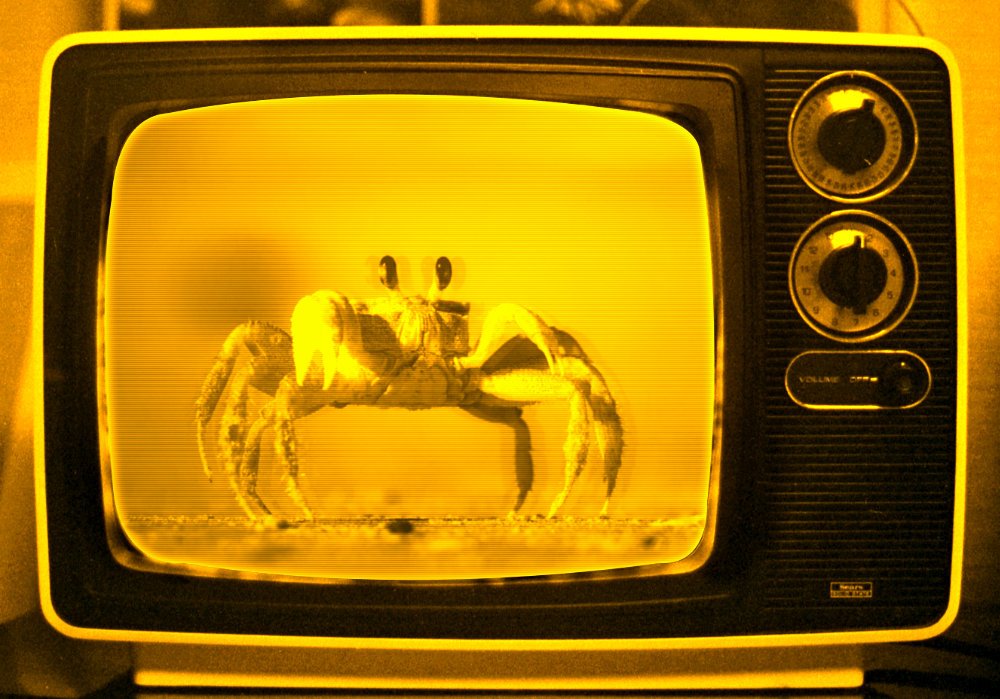 Back when I attended The Philadelphia College of Art, the city of Philadelphia was not wired for cable television while the surrounding suburbs had enjoyed the benefits of basic cable and perhaps a pay station like HBO or PRISM for a few years. I lived in New Jersey with my parents and commuted to school so I got the benefit of regular meals and crystal clear color TV on the big console in the living room. My fellow art students who lived in Philly were not so lucky. They had to fend for themselves as far as food. The price of art supplies, text books and — for one semester — obscenely expensive photographic equipment seriously dipped into the grocery budget. They weren’t artists yet, but they were starving.
Back when I attended The Philadelphia College of Art, the city of Philadelphia was not wired for cable television while the surrounding suburbs had enjoyed the benefits of basic cable and perhaps a pay station like HBO or PRISM for a few years. I lived in New Jersey with my parents and commuted to school so I got the benefit of regular meals and crystal clear color TV on the big console in the living room. My fellow art students who lived in Philly were not so lucky. They had to fend for themselves as far as food. The price of art supplies, text books and — for one semester — obscenely expensive photographic equipment seriously dipped into the grocery budget. They weren’t artists yet, but they were starving.
 Even if cable television was available, it wasn’t an option for most art students. Rent, art supplies, food and maybe 25¢ draft beers from McGlinchey’s came long before clear reception and the two-dozen or so channels offered by a basic cable subscription.
Even if cable television was available, it wasn’t an option for most art students. Rent, art supplies, food and maybe 25¢ draft beers from McGlinchey’s came long before clear reception and the two-dozen or so channels offered by a basic cable subscription.
So entertainment options were limited to well-worn long playing records mostly acquired in high school, a shoebox full of audio cassettes, the radio or a 13-inch black and white television that may or not get a signal depending on atmospheric conditions and how much patience the viewer had as far as adjusting rabbit ear antennas.
The Delaware Valley region that included Philadelphia had the three major television networks as well as a PBS station on the VHF band and a handful of local stations on the UHF band. Broadcast reception was pretty good in my South Jersey home being that the land is flat and houses were three stories at their tallest, but getting a clear picture in Center City Philadelphia was a complete crap shoot due to the taller buildings made of stone and steel and various forms of electromagnetic interference. If all the stars aligned and the rabbit ears were positioned just right, it was possible to get a watchable broadcast with intelligible audio. Once tuned, it was best to leave it alone, and for a lot of art students, it was the background noise as they labored on their assignments.
 I was doing the same thing in New Jersey. I had a 13-inch, Sears branded, black and white set in my bedroom not hooked to cable. I was tuned to the same broadcast stations as my fellow students in Philly although I didn’t have to struggle as much with the antenna to get a signal. I often had the TV on while I worked on illustration projects late into the night.’
I was doing the same thing in New Jersey. I had a 13-inch, Sears branded, black and white set in my bedroom not hooked to cable. I was tuned to the same broadcast stations as my fellow students in Philly although I didn’t have to struggle as much with the antenna to get a signal. I often had the TV on while I worked on illustration projects late into the night.’
One night, a God-awful movie came on about a giant crab attacking an island. Why did I watch it? Because it was on! I halfway paid attention to it as I was working to finish an illustration project for later that morning. I worked well into the night and collapsed into bed. I reluctantly woke to the alarm. Bleary-eyed, I gathered my illustration into my portfolio and caught the NJ Transit bus to Philadelphia.
Once in class, we all tacked our work up to the Homasote lined walls and waited for the teacher so we could start the bloodsport known as the crit or critique.
As we waited I asked if I had actually watched a movie about a giant crab or whether it was only a dream. Nope. It was real and everyone had watched it! Everybody tuned into The CBS Late Movie to watch this piece of crap!
A little research turned up the title which was Island Claws also known as Night of the Claw. It’s actually available on Blu-Ray, but you can enjoy it in its entirety for free on YouTube or just satisfy yourself with the big money shot embedded above.
Of course I remember a terrible movie, but I have no recollection as to the illustration assignment.




LOL, classic B movies…
This was a sub-classic, but the giant crab which they spent most of the budget on was impressive. Jaws had a mechanical shark. The 1976 Kong remake had a mechanical ape. Why not a mechanical crab?